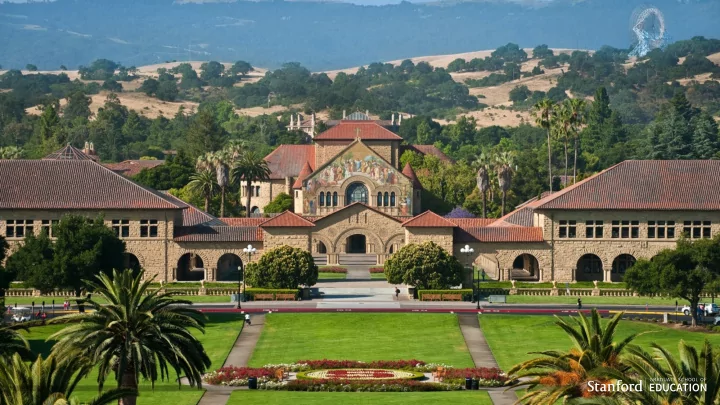

More of the Same? The Structure of Research Collaboration Networks in Homogeneous Academic Environments Luis Filipe de Miranda Grochocki Lemann Center Topics on Brazilian Education Spring 2020
Endogamy, faculty mobility and scientific networks: Impacts on Knowledge Production 1 Endogamy in the Brazilian Higher Education System: An In-Depth Analysis 2 Endogamy or Immobility? The Impact on Scholarly Productivity 3 More of the Same? The Structure of Research Collaboration Networks in Homogeneous Academic Environments
Brief introduction Endogamy occurs when universities hire their own alumni as faculty members Also known as “academic inbreeding”, these terms are heavily biased with negative social preconceptions… (this study suggests identifying these scholars as “ natives ” or “ homegrown ”, instead of “inbreds”) It is perceived as negative in many developed higher education systems (USA, Germany and England). However, it has become part of the local academic culture in many countries, at both mature (Japan, Spain and France) and younger systems (Brazil, Argentina, Eastern European countries). This practice can be due to: Agency or personal preference ; Nepotism / convenience. Structural limitations . Higher education system / job market.
Previous results First paper identified: 23% nationwide; The rate significantly differs among distinct types of institutions , fields of knowledge , states , and university ranking tiers; In elite research universities , this practice can amount to up to 70% of the faculty body; Among the main providers and most prestigious consumers of the well-trained academic workforce.
Previous results When comparing the scientific productivity of native to non-native scholars, the second paper did not find significant differences among them … Outcomes such as: Offering courses; Advising (both undergrad and grad students); Total papers published; Published papers at higher and lower ranked journals; Books; Patents; and Conferences. However, when controlling for different types of academic mobility, scholars with some foreign academic exposure are more likely to publish at better ranked journals and to advise graduate students , independent of whether they work at or away from their alma mater .
More of the Same?
A brief introduction to social network analysis A social network can be defined as a set of relations that apply to a set of actors, as well as any additional information on those actors and relations (Prell, Christina. 2012).
Different ways of measuring nodes or vertices how central an actor is… o Degree; edges or links o Indegree; o Outdegree; o Eigenvector; ----- weak ties o Betweenness . ___ strong ties
Betweenness Centrality where σ st is the total number of shortest paths from node s to node t and σ st(v) is the number of shortest paths from s to t going through v .
“Weak ties provide people with access to information and resources beyond those available in their own social circle; but strong ties have greater motivation to be of assistance and are typically more easily available.” (Granovetter, 1983, p.209).
Motivation Previous attempts have discussed how academic productivity is affected by endogamy, however, little is known about research collaborations … Nowadays, knowledge production and innovation require the crossing of scientific boundaries . A study in which social network methods are applied to describe such type of academic environment is yet to be published.
The Study Brazilian elite research universities have high numbers of native scholars. In such an environment, a high number of redundant contacts would be expected. Studies show closed networks miss out on opportunities for the exchange of new information; The University of São Paulo – USP is an elite research institution in which close to 70% of its faculty members are graduate alumni (PhD); Who do these scholars collaborate with? Are they more likely to work within their own ego networks?
Data Base lattes (Brazilian Scientific Council - CNPq) 209 faculty from agricultural sciences in the University of São Paulo (lattes id) High collaboration, prestigious field nationally / internationally 20 years of research collaboration (coauthoring papers / conferences) Around 8,050 unique nodes 59,763 edges
Scriptlattes
Total papers published per year Quantity
Research Questions 1 How is information exchanged and knowledge produced in a homogeneous academic environment? 2 Are faculty members incentivized to or discouraged from exploring gaps of knowledge in their own networks? What benefits do non-native/mobile scholars bring to these communities in 3 relation to the flow of information and to research collaboration opportunities?
Research Collaboration Networks 2000 - 2003 2004 - 2007 Native Non-native Alter
Research Collaboration Networks 2008 - 2011 2012 - 2015 Native Non-native Alter
Research Collaboration Networks 2016 - 2019
Table 1 - Estimated Effect on Betweeness Centrality (2000-2019) VARIABLES Native Scholar -24,139.851*** (6,824.165) n_papers 39,148.747*** (2,160.393) n_conf_papers 3,334.803** (1,336.249) Female -31,912.079*** (6,535.374) Faculty's age -849.995 (579.813) Reported Intern'l Academic Mobility -39,610.621*** (7,089.321) Years of experience -121.321 (647.701) Constant 29,130.874 (21,243.850) Observations 4,006 R-squared 0.540 Year Fixed Effects YES Robust standard errors in parentheses *** p<0.01, ** p<0.05, * p<0.1
Next steps Control for number of graduate advisees Apply an Exponential Random Graph Model (ERGM) Meta Network Analysis ERGM is a useful tool to measure not only how ties are formed, but also how structurally constrained they are. Compare the results to another field of knowledge within USP
Takeaways Research collaborations in the field of agricultural sciences is continuously growing at USP Faculty members seem to be incentivized to exploring gaps of knowledge, however, the networks seem to describe a mix of two models: Small-world model (Milgram, 1967): connections of scholars through shared acquaintances in a locally clustered environment; and Scale-free model (Barabási & Albert, 1999): preferential attachment relations, centralizing the organization on prestigious faculty. Finally, non-native scholars are more likely to function as bridges to non-redundant contacts, helping exchange information among their own academic networks.
Thank you! Obrigado! grochocki@stanford.edu
Recommend
More recommend